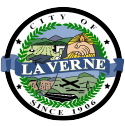The mapping tool options linked below include different tools for different purposes, and different tools for different levels of technical skill and interest. Residents can submit maps of the entire City, of one district or specific community of interest, or of multiple districts. When using these tools, residents can group Census blocks together to form a district. Census blocks are the smallest population unit available when forming districts, and therefore are considered the building block for district boundaries.
Residents are also encouraged to submit feedback on their communities of interest by filling out the Communities of Interest Worksheet. This feedback is vital to the process and will inform the demographer on where to reflect district boundaries and of resident priorities.
In light of the delays in receiving the State of California adjusted Census data and related challenges, it is important for La Verne residents to remember that they are able to submit proposed maps through the beginning of November. For consideration by Council at the November 1 hearing, resident-proposed maps using:
- The paper mapping tools must be submitted by October 22, 2021.
- The online DistrictR tool must be submitted by October 25, 2021 at 8 a.m.
Maps can continue to be submitted after these dates, but would then be reviewed by Council at the following districting hearing on November 15. For this final districting hearing, resident-proposed maps using:
- The paper mapping tools must be submitted by November 5, 2021.
- The online DistrictR tool must be submitted by November 8, 2021 at 8 a.m.
Any questions or accompanying map comments can be submitted through the Contact page.
Tools
- Paper-only maps for those without internet access or who prefer paper. (Please note: This tool utilizes the 2020 Districting Data.)
-
- The “population units” are collections of Census Blocks put together to offer the flexibility so residents can draw the district proposals they want while not being overwhelmed with the task of adding up the population of every one of the 443 official Census Blocks that make up the city. For residents who want the flexibility to use the more fine-grained flexibility to work with the Census Blocks themselves, the DistrictR online mapping tool below allows residents to do so.
- Tools needed:
- Paper maps with a Microsoft Excel spreadsheet to calculate population totals. (Please note: This tool utilizes the 2020 Districting Data.)
-
- The “population units” are collections of Census Blocks put together to offer the flexibility so residents can draw the district proposals they want while not being overwhelmed with the task of adding up the population of every one of the 443 official Census Blocks that make up the city. For residents who want the flexibility to use the more fine-grained flexibility to work with the Census Blocks themselves, the DistrictR online mapping tool below allows residents to do so.
- Tools needed:
- DistrictR is a simple online map drawing tool to easily draw neighborhoods or communities of interest using Census Blocks and a paintbrush-like feature. (Please note: This tool has been updated with the 2020 Districting Data.)
-
- A few important notes about DistrictR:
- To ensure that new maps are created using the official 2020 Districting Data, residents should always start drawing from a new map rather than copying a previously created map. If a previous map that utilizes estimated data is copied and used as a starting point, the estimated data is also copied with it.
- Residents may create a map of 5 districts by starting with a blank map and clicking the purple button that reads “5 Council Districts.” Residents may also submit maps of fewer or more than 5 districts by clicking the red button that reads “Identify a community.”
- If you select the purple button that reads “5 Council Districts,” since the system is configured to draw five-district maps users will need to track and calculate population balance on their own. Additionally, when the demographer imports a four-district map into their system for processing they will be able to calculate the appropriate population balance figure.
- When you use DistrictR, please be mindful of what the percentage value displayed at the bottom right side of the page is actually showing you. It shows the maximum population deviation, which takes the district that is furthest away from the ideal (either over or under), and tells how much it deviates from that ideal. This is not the same thing as the total population deviation that we often refer to. The total population deviation is the sum of the absolute values of the greatest positive deviation and the greatest negative deviation.
- Tools needed:
- DistrictR
- View the DistrictR mapping tool tutorial video (This training video utilizes another jurisdiction map for instructional purposes; the features/tools available to La Verne residents, however, are the same.)
- A few important notes about DistrictR:
- Interactive Review Map to review, analyze, and compare maps, not to create them. Zoom in and out on map boundaries, view population counts/ID#s, and view draft maps. Similar to Google Maps in ease of use.
-
- Tools needed:
If you would like to submit a map created using your own software, please submit via the contact page form and include: (1) a link to a GIS Shapefile and/or a Census Block equivalency file (using 2020 Census Blocks); and, (2) a description of the choices and key points of your map.
Submit maps via the contact page form. After you submit your map, the demographic consultants will generate the population and other demographic details for your proposed map. Maps can be viewed on the Draft Maps page or on the Interactive Review Map (link coming soon).
It is helpful if you submit written comments with your map describing how your map was drawn to meet the required criteria. An example of this would be describing the specific neighborhoods or communities of interest that are kept within a single district.
